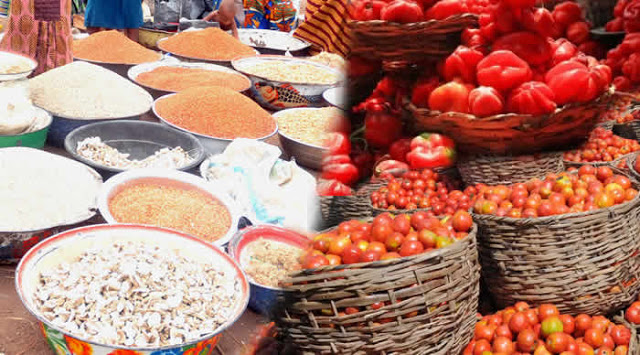Global food prices may have eased since the onset of Russia’s war in Ukraine but remains at historic high, according to the International Monetary Fund (IMF).
This is according to the Recent Global Food Security Update, entilted “Recent Development, Outlook, and IMF Engagement Reported”.
The report showed that as of February 2023, global food prices had returned to their prewar levels but remained significantly higher than before COVID-19.”
The report said food prices had increased substantially on the back of pandemic-induced supply-chain disruptions, gaining 39 per cent between January 2020 and February 2022.
It said Russia’s war in Ukraine and export bans in some large producer countries had further exacerbated pressures on key cereal, energy, and fertilizer markets.
“Thus, leading global food prices to increase by another 10 per cent between February and April 2022.”
Adjusted for inflation, the report said global food prices reached a 60-year high in March 2022.
“Since then, the Black Sea Grain Initiative has allowed grain exports from Ukraine to resume.
“Some export bans were reversed, and food production levels exceeded expectations in some of the main exporting countries like Australia and Russia.
It said these trends had contributed to taming pressures on most food markets.
The report, however, said international rice prices, which were broadly stable in 2022, had continued to increase rapidly in 2023.
The report attributed the increase to the supply constraints and high domestic demand in some exporting countries.
The report said targeted assistance to the most vulnerable households could help countries withstand the fallout of the ongoing food crisis while building longer-term resilience.
” This should be combined with policy measures to support trade and agriculture systems, including measures to better cope with climate shocks.”
The report said the IMF, working in close cooperation with other international organisations, had continued to contribute to international efforts to alleviate food insecurity.
“The IMF has done this by providing policy advice, capacity development, and financial support through the Food Shock Window and Upper Credit Tranche Arrangements.
“Also through new commitments to countries particularly affected by the global food crisis totaling 13.2 billion dollars since February 2022, of which 3.7 billion dollars has been disbursed as of March 2023.”
The report said the World Bank Group had continued to respond to the Food and Nutrition Security (FNS) crisis through a targeted and scaled-up multisectoral approach to address both short-term and longer-term needs.
” The World Bank FNS commitments delivered to date are almost 16 billion dollars, nearly evenly split between short-term response (8.8 billion dollars ) and long-term resilience response (7.2 billion dollars).
“Disbursements from World Bank’s new lending stand at 2.6 billion dollars (21 per cent of the commitment amounts), and on the portfolio side, 5.3 billion dollars has been disbursed since April 2022.”
It said more than 40 per cent cover Africa, and more than 30 per cent cover fragile, conflict and violence-affected countries.
“These interventions primarily come from agriculture, social protection,
and health and nutrition operations reflecting both crisis support and long-term response.”
It said the World Bank’s financing had expanded to 86 countries (about 60 per cent in Africa), covering nearly every hunger hotspot.
The report said the interventions were expected to strengthen FNS of more than 296 million beneficiaries in the coming years.
According to the report, almost half of these beneficiaries live in fragile, conflict- and violence-affected contexts, and half are women.




